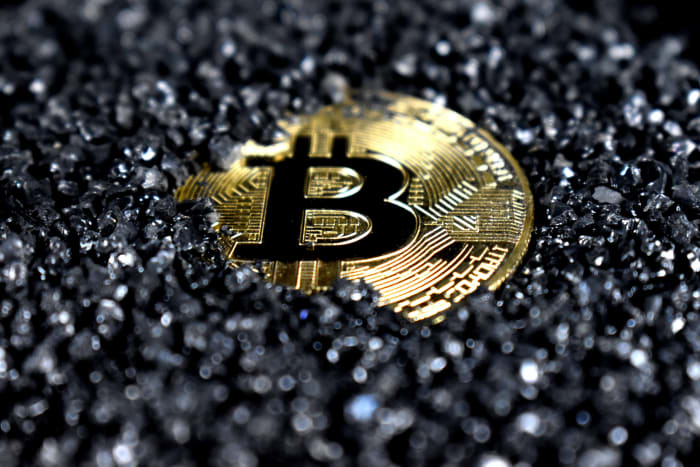The Inflation Reduction Act Is Not What It Seems – Bitcoin Magazine
This is an opinion editorial by Andrew Axelrod, a Bitcoin educator and writer.
As any charlatan knows, the best lies have at least a kernel of truth. This makes them much easier to slip past. But of course that’s a whole other class of lie – an entirely more psychotic kind of lie.
This lie is not only false, but is actually the exact inversion of the truth.
An anti-truth.
Historically, this is known as a “big lie”.
In fact, the term was coined by Adolf Hitler, who inadvertently described his own tactic of telling lies so monumental that people would simply buy in, unable to cope with the idea that someone “could have the audacity to distort the truth so notoriously” .
It’s the difference between a kid telling a fib:
“Sorry mom, I ate a cookie – or maybe two at the most. But I have no idea what happened to the rest of the jar.”
and a psychotic lie:
“Mom, not only did I not eat the cookies, I know it was YOU!”
When repeatedly confronted with such blatant anti-truths, decent people do not know how to respond. They go into a state of shock. Often people will eventually just shrug their shoulders in resigned acceptance and move on.
That’s all it takes for an anti-truth to continue.
Aleksandr Solzhenitsyn said it best: “We know they’re lying, they know they’re lying, they know we know they’re lying, we know they know we know they’re lying, but they’re still lying.”
In politics, such anti-truths abound, and they are used strategically to great effect, especially when it comes to cajoling the public into swallowing legislation contrary to their best interests.
It’s not surprising, unfortunately.
Bills are usually thousands of pages long, and almost no one bothers to read them, often including the voting bodies themselves.
There’s a running joke that if you want to know what’s actually in a bill, you just take the name and end up with the opposite:
Indeed, the Patriot Act was deeply hostile to American values.
No Child Left Behind abandoned students in favor of a tick-the-box exercise.
The Affordable Care Act was prohibitive, as it turns out.
And now the ironically named Inflation Reduction Act was just signed into law.
With the United States unofficially in a recession and the midterm elections just around the corner, policymakers have been tripping over themselves to rush through the next big stimulus.
While they do their best to put a happy face on the severity of the current situation and celebrate fabricated employment numbers and argue over definitions of recessions, the facts on the ground look dire.
The reality is that personal savings have collapsed to below 5%, the lowest since 2008.
This means that the average person enters a recession without the safety net of a cash buffer.
And then the cash register enters, the scene again.
The $3.5 trillion Build Back Better bill, which died last year as inflation soared, was miraculously resurrected from the dead last month.
How convenient.
Only this time, the name was quickly changed to the “Inflation Reduction Act” and the stimulus was trimmed down to $740 billion.
Despite the bill’s name, the unfortunate fact remains that it floods the economy with billions of dollars as inflation remains high. Take a wild guess what that will do to prices. But who would be reckless enough to pour gasoline on a raging fire?
Well, central planners in a debt-based fiat system would. Because the current system is debt-based, the money supply must be inflated. Money arises through debt issuance and compounds through interest. The supply of US dollars has increased by more than 50% since 2020. And money growth is only increasing.
No matter what anyone says, the system needs to add more debt to service compound interest. Otherwise, the whole thing relaxes into a cascading spiral of debt.
To be clear, this is not an American problem – it’s a fiat money problem. The same and much worse is happening all over the world.
It is no coincidence that total global debt to GDP is close to 350% and growing rapidly.
In stark contrast, bitcoin proposes an alternative system; a system that makes no promises except for a fixed inflation schedule as block after block is mined like clockwork.
In a Bitcoin system, there is no room for a 730-page bill that floods the system with newly printed money and drives prices to unattainable heights.
The supply ceiling of 21 million is an iron rule, almost a law of nature. This truth cannot be changed, no matter the lies.
But given that our current fiat system has a built-in requirement for money printing, money will be printed one way or another.
And those who run the Inflation Reduction Act are happy to oblige.
Another feature of this bill is the $80 billion in funding it will allocate to the IRS over the next 10 years, focusing on tax enforcement. This will more than double the IRS’s current workforce with a further 87,000 new agents.
This is more employees than the Pentagon, the State Department, the FBI and the Border Patrol combined.
Taxing Americans in poverty is certainly one way to fight inflation, albeit a slightly morbid way. But why now?
For many past decades, state budgets have done so not been financed by actual tax revenues.
Instead, an increasing portion of the budget is financed by inflation, AKA money printing.
There are two reasons for this:
1. It is politically much easier to tax through inflation (via money printing) than to collect taxes directly. It’s kind of how paying for things on credit feels different than paying for it with cash.
2. As discussed, today’s fiat system is debt-based and has a built-in demand for money supply expansion.
This has worked, until now.
But since compound interest necessarily continues to increase debt exponentially, things can start to break down. It’s just math. That’s because the price of money printing is the destruction of currency.
As currencies fail, there are now rumblings of a return to some kind of hard money standard, ending the 50-year fiat experiment.
Many panicked central banks are increasing the pace of hoarding gold, and of course two countries have adopted bitcoin as a reserve currency – they won’t be the last either.
Under a hard monetary standard, deficit spending will be much more difficult than printing money and tax revenues will be crucial for governments.
The Wall Street Journal and CBS News have already reported on a shift in IRS behavior and how average taxpayers may be increasingly audited.
This will not exclude taxpayers in the lower brackets. Last year’s ruling that the IRS now requires reporting of payment transactions exceeding just $600 seems to underscore this point.
And so, not only does the Inflation Reduction Act print more money, but it also attacks the very people it promises to protect with a slew of tax overhauls.
That is the big lie.
This is a guest post by Andrew Axelrod. Opinions expressed are entirely their own and do not necessarily reflect the opinions of BTC Inc or Bitcoin Magazine.




